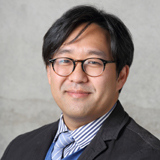Panel: New Asian Economic Order (RR)
– Talking Points: Terada Takashi
– Talking Points: Lee Chang Jae
– Talking Points: J. James Kim
Date/Time: Tuesday, April 22, 2014 / 16:00-17:15
Speakers:
Choi Byung Il, Inha University (Moderator)
J. James Kim, The Asan Institute for Policy Studies
Lee Chang Jae, Korea Institute for International Economic Policy
Shen Minghui, Chinese Academy of Social Sciences
Terada Takashi, Doshisha University
Panel Description
Despite the ever-increasing number of free trade agreements between East Asian countries, an overarching regional economic framework has remained elusive. Regional economic integration does not operate in a void but is subject to constantly shifting dynamics among Asia’s major powers. Even as sustained economic growth across the region has raised living standards, the United States-led Trans-Pacific Partnership (TPP) and ASEAN-led Regional Comprehensive Economic Partnership (RCEP) provide competing movements toward deeper integration. Will regional economic integration succumb to growing Sino-American and Sino-Japanese competition, or is a new Asian economic order still possible?
Session Sketch
Rapporteur: John Clinton Work, International Crisis Group
Professor Choi Byung Il opened the session by stressing how access to global markets has led the region out of poverty to rapid growth rates and modernization. However, can progress be sustained? Several challenges stand in the way, including economic nationalism and increasing historical rivalries. What role might the TPP, RCEP, and other agreements play in fostering regional economic integration?
Dr. J. James Kim stated that the key issue was whether the TPP and RCEP could provide the basis for a new Asian economic order, with two main caveats. First, neither agreement has been completed. Second, while both agreements have political implications, they are primarily trade deals. Nevertheless, both agreements are significant in terms of overall member states, consumers, and dollar value. The TPP is a high-quality agreement. While it does contain phased-on compliance schedules, it would be trendsetting over time. The RCEP is mainly concerned with market access and involves several underdeveloped economies. Regardless of whether the agreements are completed, Asia’s economic power remains an important reality.
Dr. Lee Chang Jae echoed that negotiations are ongoing. Thus, only time will tell whether the agreements will be complementary or competitive. The RCEP is a particularly interesting case for regional deepening, but two main points must be kept in mind. First, the agreement is ASEAN-centric. Second, there is a significant development gap between the various members. Consequently, it is inherently difficult to complete. Negotiators should adopt a more gradual, less comprehensive approach. Although the RCEP would be more valuable symbolically and would not replace many bilateral FTAs in the region, it would be comparable to other regional frameworks such as NAFTA and the EU. In this sense, RCEP could be regarded as an enlargement of AFTA, and a possible step towards a larger East Asian Economic community.
Dr. Shen Minghui took a different view of the RCEP and TPP, stating that they did not signify a new Asian economic order. Rather, the RCEP was triggered by the US pushing the TPP. In this sense, China remains a rule-taker rather than rule-maker. Moreover, China is reluctant to pursue FTAs, having made no new agreement since 2008. Thus, with China’s reluctance and the incompatibility of the two FTA templates, it is hard to imagine the two agreements merging together. Consequently, despite difficulties in the Doha Round, the WTO remains the best mechanism for trade integration.
Professor Terada Takashi began by noting the spaghetti bowl effect of numerous bilateral FTAs, which complicates trade for MNCs and is not indicative of regional cohesion. Therefore, a larger regional FTA could be beneficial. China remains the key player. The TPP is more open to newcomers than the RCEP, as the latter requires all members to first complete a bilateral FTA with ASEAN. Thus, the TPP’s openness provides leverage. For now, China is taking a wait-and-see approach, but if the TPP is completed it could change course and choose to join.
The question-and-answer session focused on several points. Dr. Choi Byung Il asked what the implications of business as usual were. Dr. J. James Kim argued that growth among states such as China, India and others must be dealt with, and FTAs are a way to harness such growth. Dr. Lee Chang Jae responded that while many agreements have emerged over the last decade, a high quality deal will probably take several years. Dr. Shen Minghui echoed his earlier point doubting the usefulness of FTAs, but did state that completion of TPP might push China towards other deals. Professor Terada Takashi noted the point that FTAs often involve the compromise between emerging and established economies, thus effecting how deep or shallow the agreements can be.

 Facebook
Facebook Twitter
Twitter














